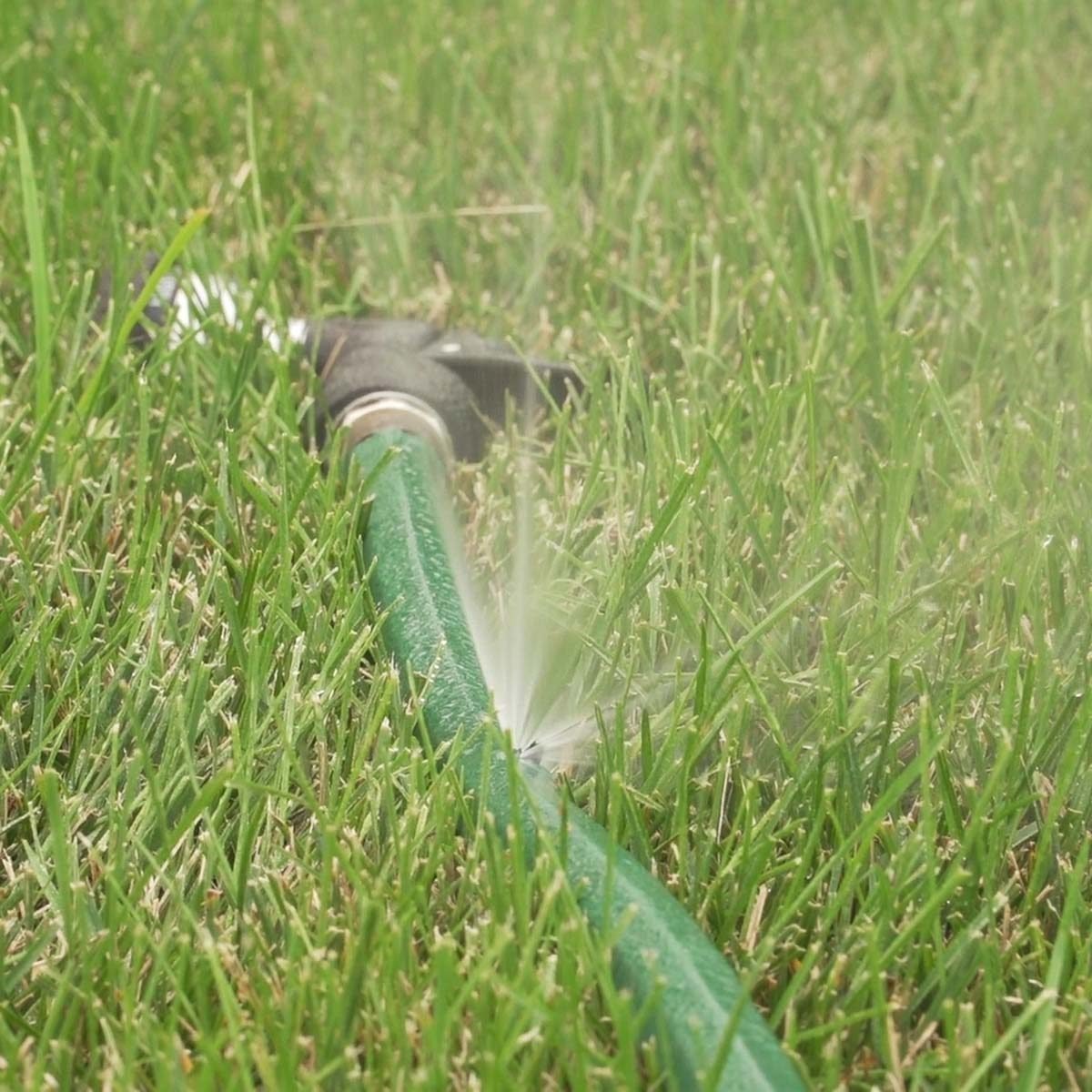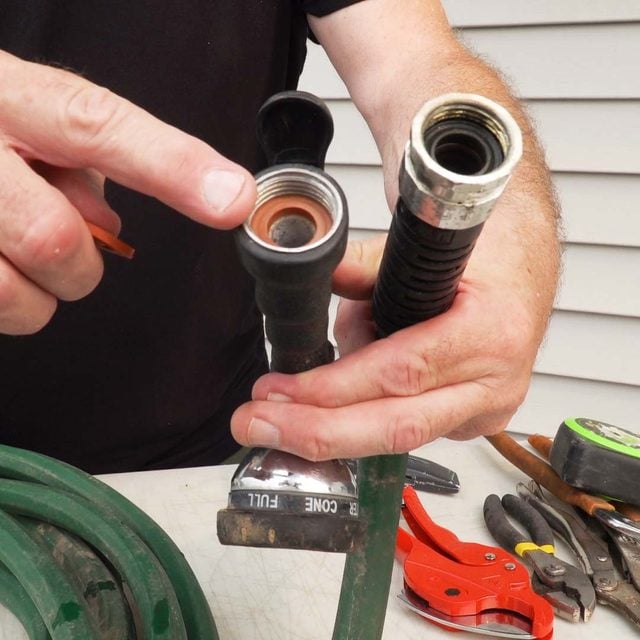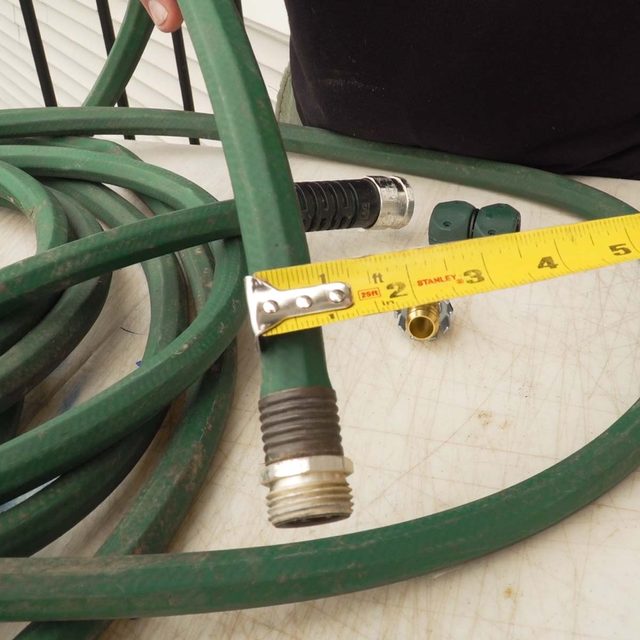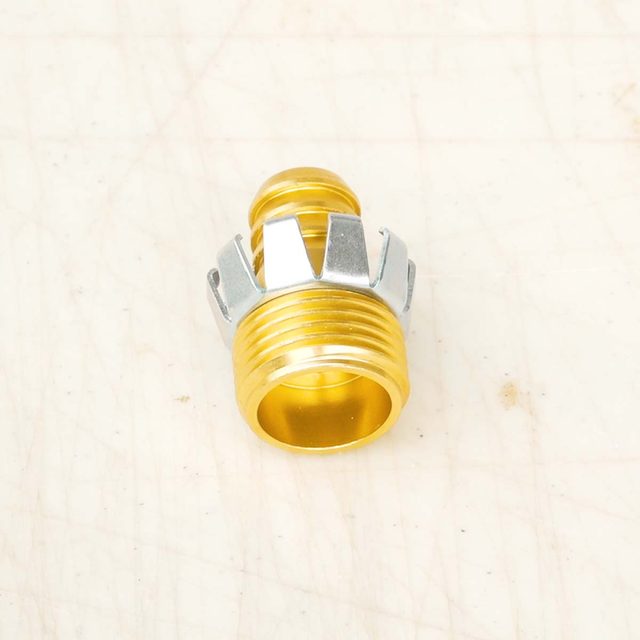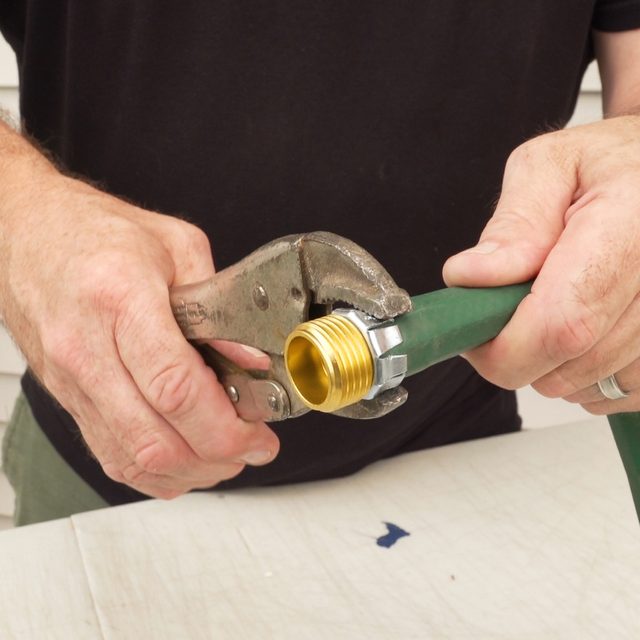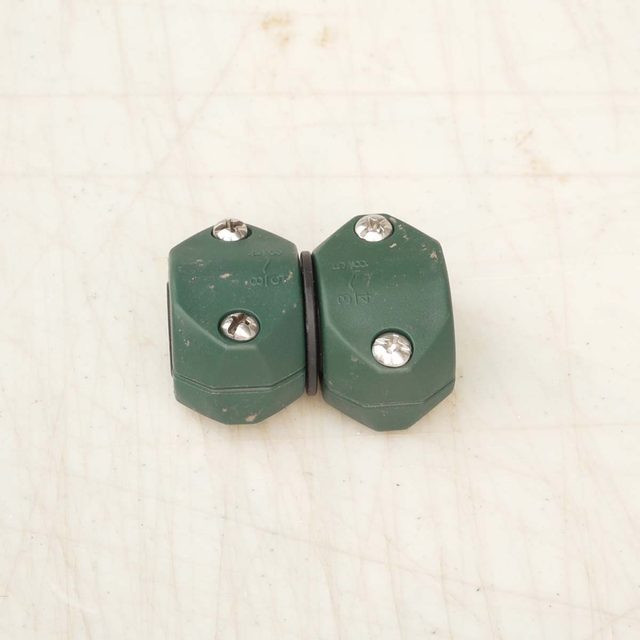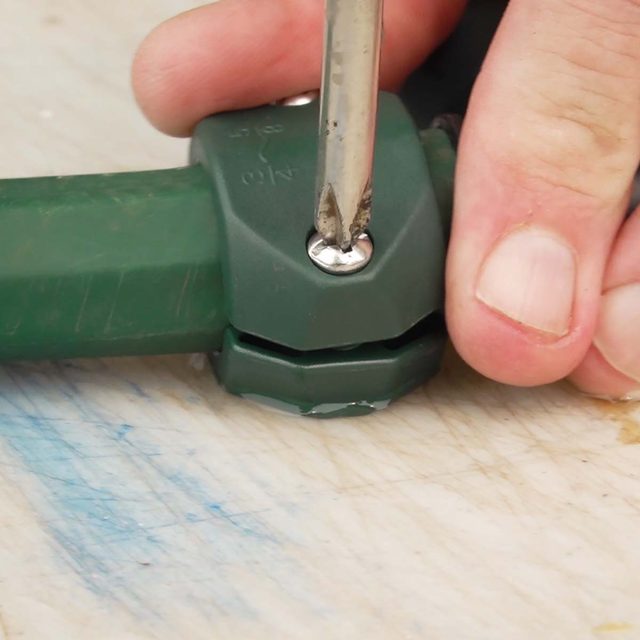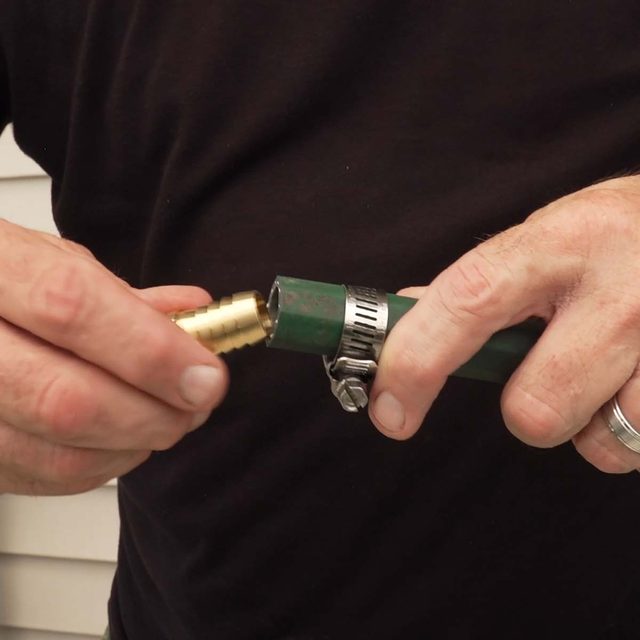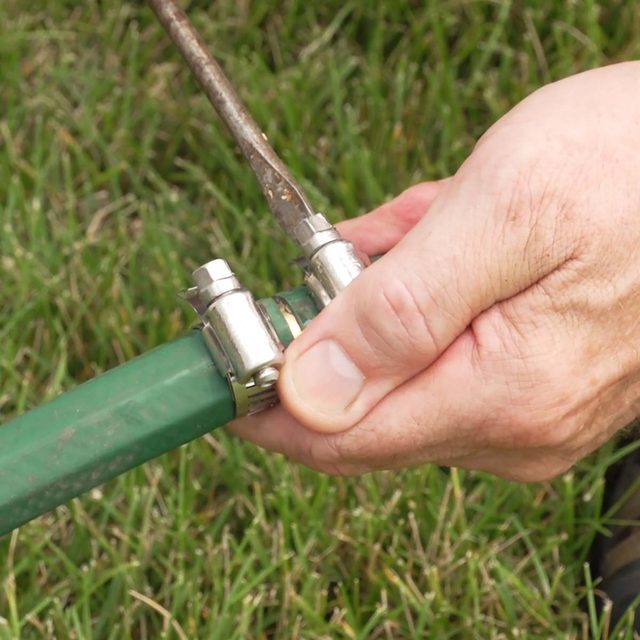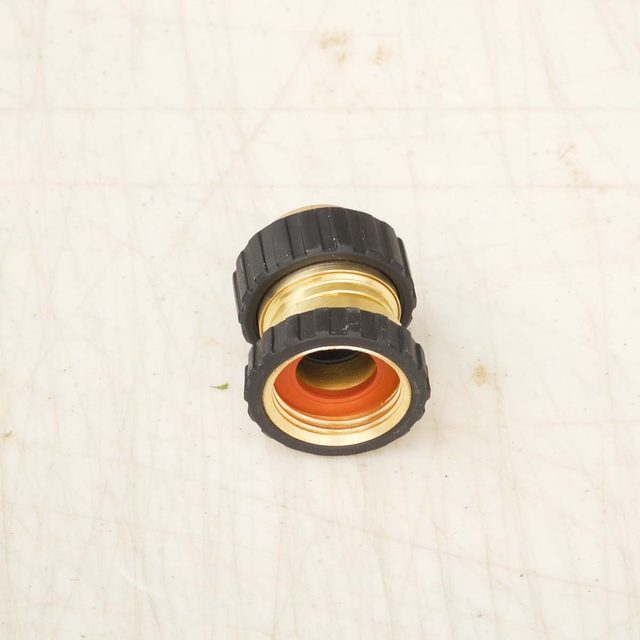How to Repair a Garden Hose
Fix leaky garden hoses quickly and cheaply.
Our editors and experts handpick every product we feature. We may earn a commission from your purchases.
An hour or less
Beginner
$5–10
Introduction
There is nothing more frustrating than a leaky garden hose. Half your water goes down the storm drain or onto your shoes and not on your lawn. It doesn't have to be that way. Read on to learn some quick, inexpensive and easy garden hose fixes.Tools Required
- Phillips-head screwdriver
- Pliers
- Utility knife
Materials Required
- Garden hose repair couplings
Project step-by-step (5)
Step 1
Where is the Leak?
- If water is leaking from either end of the hose, such as at the faucet or spray attachment, the fix could be as simple as replacing the rubber washers in the female end of the hose and or spray attachment.
- If a leak is within a foot of the male or female connectors, cut off the end of the hose and replace the connector.
- If the leak is in the middle of the hose, cut out the damaged section and splice the hose back together with a repair coupling.
Step 2
Measure
- Before heading to the hardware store for repair parts, measure what size garden hose you have. The three common sizes of garden hose are 1/2-, 5/8-, and 3/4-inch. That is the ID (inside diameter) of the hose.
- The OD (outside diameter) is typically 1/8-inch larger than the ID. So a 5/8-inch hose has a 3/4-inch OD.
Step 3
Cutting the Hose
- Cut the damaged end or section from the hose using a utility knife or pruning shears. A Pex tubing cutting tool works well for this, too.
Step 4
Four Easy Repairs
Clench Hose Menders
- Replace the ends or splice the middle of a hose with clinch hose menders. Once you have the damage section cut off the hose, stick the barbed end of the repair fitting into the hose. Bend the tangs down and into the hose, squeezing it evenly with a pair of pliers, channel locks or vice grips.
Clamp Couplers
- Clamp couplers for ends and splicing hoses are another easy hose fix.
- Remove the screws and cover from the coupler.
- Stick the barbed end into the hose.
- Replace the cover and tighten the screws.
Hose Clamps
- Hose clamps and a three-inch piece of 1/2-inch copper tubing work well for a splice repair.
- Slip a hose clamp over the end of the cut hose.
- Insert the 1/2-inch piece of copper tubing into the hose, letting 1-1/2 inches stick out. Now, tighten the hose clamp with a screwdriver.
- Slip another hose clamp over the end of the other piece of cut hose. Insert the 1/2-inch piece of copper tubing and tighten the clamp with a screwdriver.
Compression Mender
- Compression mender probably is the easiest garden hose fix.
- Unscrew and separate the collar from the repair fitting.
- Slip the collar over the hose.
- Push the repair fitting onto the hose, then screw and tighten the collar to the repair fitting.
Step 5
Test for Leaks
- Connect the hose to the faucet and turn it on, checking for leaks.
- If a repair leaks, try tightening the screws or collar on the fitting.
Originally Published: August 06, 2021
